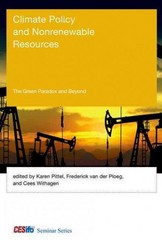Question
These questions address the short run effects of financial shocks and policy responses on the overall economic performance of an economy that initially runs a
These questions address the short run effects of financial shocks and policy responses on the overall economic performance of an economy that initially runs a current account deficit. They refer to a length of run over which the productive capital stock is fixed, determined by previous investment. New investment cr******es expenditure on current GDP but does yet not affect current production capacity. External factor income flows net out at zero. All questions require diagrams that represent the domestic financial capital market and the market for foreign exchange, interlinked by the balance of payments (BoP = CA + KA = 0), and the money market, interlinked in turn with the financial capital market by the real long maturity yield, r. Unless otherwise stated, assume there is no expected inflation (?e = 0, so the nominal and real long maturity yields are equal, i = r), and assume at the outset that all markets clear, including the labour market, and hence that the nominal wage, W, is flexible. Revise these assumptions only when instructed. Q1: An economy runs a current account surplus. There is full employment and a flexible nominal wage, so its GDP is fully determined in the clearing labour market in the short run. A previous period of export driven expansion has encouraged financial capital inflow, both of which have caused its real exchange rate to appreciate. To control any unattractive domestic implications of this, the country's central bank, which targets the nominal money supply, MS, wishes to contract it. a) Define the real exchange rate in terms of the price level and the nominal exchange rate, taking care to l****** the units of each variable. Then, without using more than your definition in support, briefly explain why an export expansion that raises the terms of trade, combined with a capital inflow, might appreciate the real exchange rate and why this would have caused the central bank to consider monetary contraction. b) Draw diagrams to represent the domestic financial capital market and the foreign exchange market, interlinked by the balance of payments (BoP = CA + KA =0), and the money market, interlinked with the financial market by the interest rate (?e = 0 so i = r). Offer brief explanations as to how the diagrams are interlinked and culminate in the determination of the real and nominal exchange rates. c) Sketch the balance sheet of the central bank and briefly describe how the central bank will bring about the monetary contraction, detailing the role of the short maturity interest rate. d) Use your market diagrams to indicate which variables are affected by the monetary contraction and, in particular, how this works to control the price level, PY. Think of the export and capital expansion shocks as being in the past, so that you consider only the isolated effect of the monetary contraction in this analysis. Q2: An Asian economy runs a current account surplus and it is subjected to a capital flight. Assume its labour market clears, retaining full employment. The central bank fully offsets the financial outflow by running down or reducing the rate of increase of official foreign reserves (R?, or ?R?) sufficiently to prevent any change in the long maturity yield at home. The nominal wage is rigid downward. a) For the case in which the central bank does nothing more than sell foreign assets and use the proceeds to purchase domestic currency, use diagrams to illustrate the effects of this shock and its policy response to discuss the effects on the real and nominal exchange rates and whether the net effect is expansionary or contractionary of domestic output and employment. Use a sketch of the balance sheet of the central bank to aid in this assessment. Complement your diagrams and the balance sheet with explanatory text. b) Use your sketch of the central bank's balance sheet to help you to discuss whether any unattractive consequences might be avoided if the central bank were to "sterilise" the R?. Q3: An economy that has been recessed with very low short maturity yields has embarked on a period of unconventional monetary policy (UMP), causing a significant enlargement of its central bank's balance sheet. It is now subjected to a financial optimism shock that takes the form of a rise in the expected, risk adjusted, net rate of return on installed capital, rce? and a rise in expected future income, Ye?. Its central bank targets the price level, PY. a) Assuming no further changes in the nominal money supply, use diagrams to illustrate the effects of this combined optimism shock on the yield on long maturity instruments, the current account, the real exchange rate, and the nominal exchange rate. b) Infer the changes in the volumes of consumption, saving and investment within the home economy, briefly explaining your results. c) Describe any change this would require in its central bank's operations. In particular, discuss the two options the central bank would have to control the undesirable effects associated with the economic resurgence. Would the yield on short maturity assets, necessarily need to change? If so, in what direction?
Step by Step Solution
There are 3 Steps involved in it
Step: 1

Get Instant Access to Expert-Tailored Solutions
See step-by-step solutions with expert insights and AI powered tools for academic success
Step: 2

Step: 3

Ace Your Homework with AI
Get the answers you need in no time with our AI-driven, step-by-step assistance
Get Started


